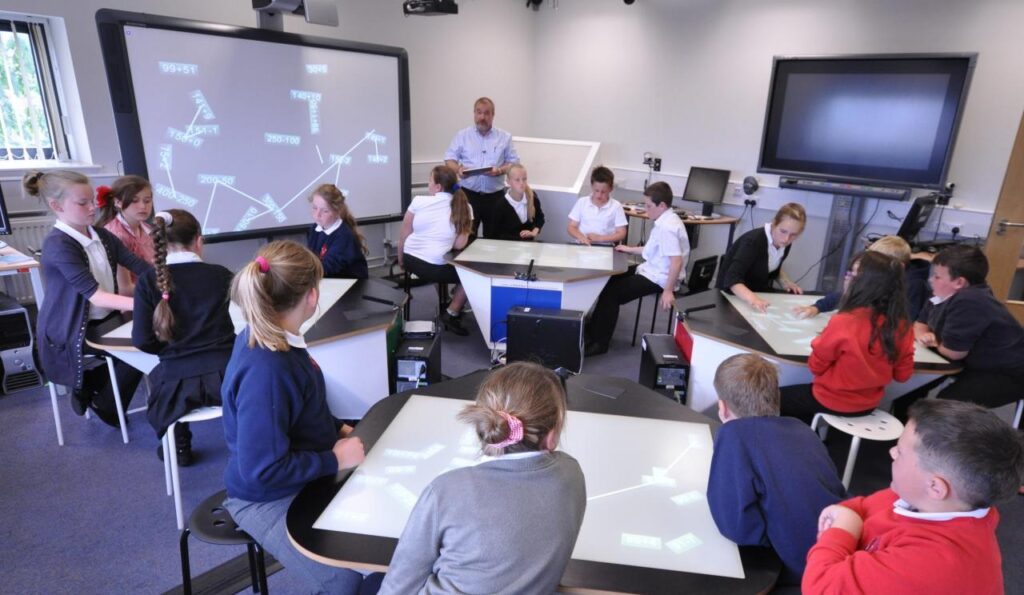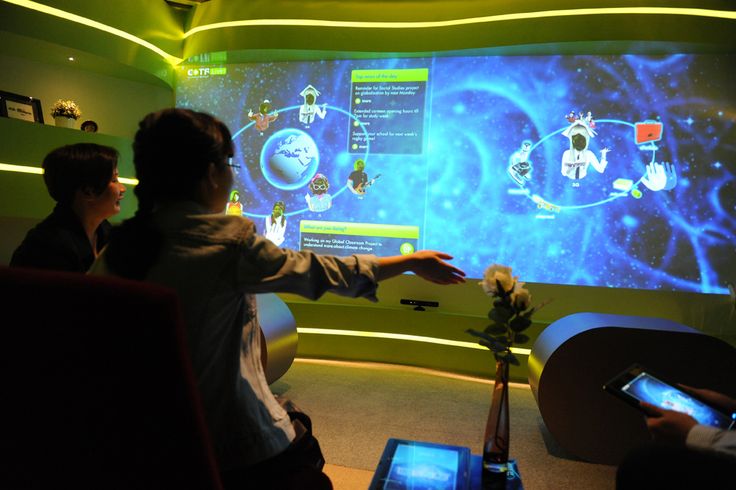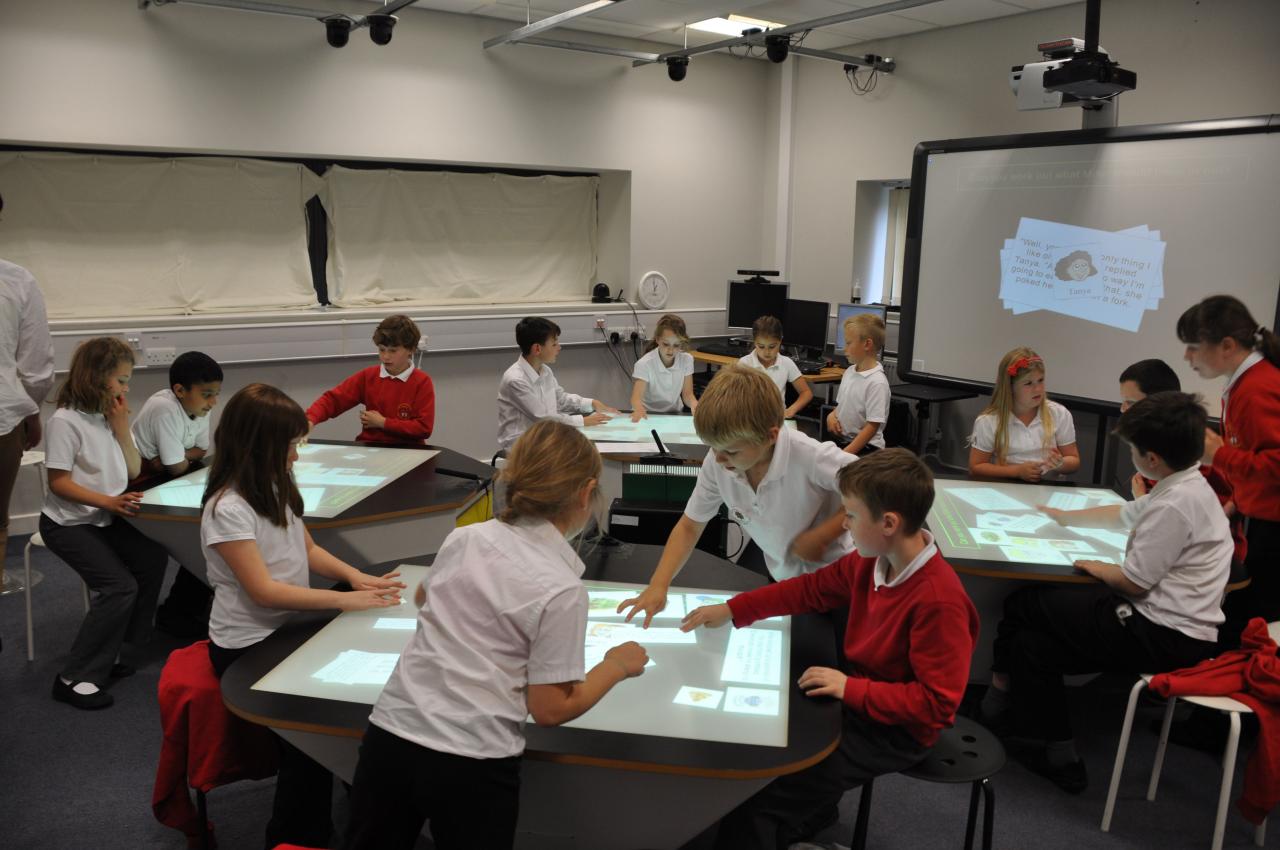The landscape of education is undergoing a seismic shift, propelled by technological advancements, global connectivity, and an increasing demand for flexible, personalized learning experiences. At the forefront of this revolution is the profound transformation encapsulated by the phrase “Future Learning Goes Online.” This isn’t just about moving traditional classrooms to digital platforms; it’s about fundamentally rethinking how knowledge is acquired, skills are developed, and education is delivered. From AI-powered tutors to immersive virtual realities and hyper-personalized curricula, online learning is evolving into a dynamic, accessible, and highly effective modality that will shape the global workforce and empower lifelong learners, cementing its role as the definitive path for future learning.
The Genesis of Online Education: From Correspondence to MOOCs
To fully appreciate the trajectory and potential of future online learning, it’s crucial to understand its historical roots and the pivotal milestones that have shaped its evolution.
A. The Early Days: Correspondence Courses
The earliest form of remote learning emerged long before the digital age, relying on traditional mail.
- Mail-Based Instruction: Students would receive educational materials and assignments via postal service, completing them at their own pace and mailing them back for grading. This offered flexibility but lacked immediate feedback and interactivity.
- Limited Scope: Primarily focused on vocational training or basic academic subjects, these courses were a lifeline for those unable to attend physical institutions.
- Limitations: Slow communication, lack of real-time interaction, absence of multimedia, and heavy administrative burden significantly constrained the depth and reach of learning.
B. The Digital Infusion: Early E-Learning
The advent of computers and the internet laid the groundwork for rudimentary electronic learning.
- Computer-Based Training (CBT): Early CBT involved software programs installed on individual computers, offering self-paced lessons and quizzes. These were often static and lacked internet connectivity.
- Web-Based Training (WBT) and CD-ROMs: The proliferation of the internet and CD-ROMs allowed for richer multimedia content, but still largely replicated traditional textbook formats, often lacking dynamic interaction.
- Early Virtual Learning Environments (VLEs): Platforms like Blackboard and Moodle began to emerge, providing centralized hubs for course materials, discussion forums, and assignment submission, mimicking some aspects of physical classrooms online.
- Limitations: Bandwidth constraints, limited multimedia capabilities, and often asynchronous interactions meant these early platforms primarily supplemented, rather than replaced, traditional learning.
C. The Internet’s Revolution: MOOCs and Accessibility
The early 21st century, with widespread broadband and web 2.0 technologies, brought a significant leap in online learning accessibility and popularity.
- Massive Open Online Courses (MOOCs): Platforms like Coursera, edX, and Udacity democratized access to university-level education from top institutions. MOOCs offered structured courses, video lectures, quizzes, and peer forums to a global audience, often for free.
- Growth of Online Universities: Fully online degree programs gained accreditation and popularity, offering flexible pathways to higher education for working professionals and geographically dispersed students.
- Blended Learning Models: Schools and universities began integrating online components into traditional courses, creating ‘blended learning’ environments that combined the best of both worlds.
- Limitations: While revolutionary for access, MOOCs often suffered from low completion rates. The learning experience could still feel passive, lacking personalization and deep engagement for many learners. Quality control across the vast array of offerings also became a challenge.
The journey reveals a consistent drive towards greater accessibility, flexibility, and richness in online learning, setting the stage for the transformative potential of its future.
Core Pillars Defining Future Online Learning
The next generation of online learning transcends simple digital delivery, embracing advanced technologies and pedagogical approaches to create highly engaging, personalized, and effective educational experiences.
A. Artificial Intelligence and Machine Learning (AI/ML)
AI is poised to revolutionize online learning by making it deeply personalized, adaptive, and intelligent.
- Personalized Learning Paths: AI algorithms analyze a learner’s strengths, weaknesses, learning style, and pace to tailor content, assignments, and progression. This ensures each student receives an education optimized for their individual needs, rather than a one-size-fits-all approach.
- AI Tutors and Mentors: AI-powered virtual tutors can provide instant, personalized feedback, answer questions, and offer remediation or advanced challenges, mimicking human instructors. They can identify common misconceptions and adapt explanations.
- Adaptive Content Delivery: AI dynamically adjusts the difficulty level, format (e.g., video, text, interactive simulation), and examples based on real-time learner performance, keeping engagement high and ensuring optimal challenge.
- Automated Assessment and Feedback: AI can automate grading of essays, code, or complex problem sets, providing immediate, constructive feedback to learners and freeing up instructors’ time for more nuanced interactions.
- Predictive Analytics: AI can predict student attrition or areas where a student might struggle, allowing instructors to intervene proactively with targeted support.
B. Immersive Technologies: VR, AR, and the Metaverse
Virtual Reality (VR), Augmented Reality (AR), and the emerging Metaverse will transform online learning from a flat screen experience into deeply immersive and experiential journeys.
- Virtual Field Trips and Labs: Students can explore ancient civilizations, conduct complex scientific experiments, or dissect virtual organs in a realistic 3D environment, overcoming geographical and safety constraints.
- Skill-Based Training Simulations: VR/AR provides safe and repeatable environments for training in high-stakes professions (e.g., surgery, piloting, complex machinery operation), allowing learners to practice skills in realistic scenarios without real-world risks.
- Collaborative Virtual Classrooms: The Metaverse offers persistent, interactive 3D spaces where students and instructors can meet as avatars, collaborate on projects, and engage in discussions in a more natural and engaging way than traditional video calls.
- Gamified Learning Experiences: Immersive environments lend themselves well to gamification, turning learning into engaging quests, challenges, and interactive narratives, boosting motivation and retention.
C. Adaptive Content and Microlearning
Future online learning will deliver content in flexible, modular formats tailored to modern attention spans and lifelong learning needs.
- Microlearning: Breaking down complex topics into small, digestible, self-contained units (e.g., 5-minute videos, interactive quizzes, single concept modules). This caters to busy schedules and just-in-time learning.
- Dynamic Content Generation: AI can generate personalized learning content on the fly, adapting to a learner’s specific queries, skill gaps, or areas of interest, creating a truly responsive learning environment.
- Modular Curriculum Design: Courses will be designed as flexible modules that can be mixed and matched, allowing learners to create highly customized learning pathways or earn micro-credentials for specific skills.
- Cross-Platform Accessibility: Content will be optimized for seamless delivery across various devices (desktops, tablets, smartphones, VR headsets), ensuring accessibility from anywhere.
D. Blockchain and Decentralized Learning Records
Blockchain technology is poised to bring unprecedented transparency, security, and portability to educational credentials and learning pathways.
- Immutable Credentials: Digital certificates and degrees stored on a blockchain are tamper-proof, verifiable, and globally recognized, eliminating fraud and simplifying credential verification for employers.
- Decentralized Learning Pathways: Learners can build a portable portfolio of skills and micro-credentials from diverse sources (online courses, traditional institutions, workplace training), all verifiable on the blockchain.
- Learner Ownership of Data: Blockchain can empower learners with greater control over their educational data, allowing them to selectively share verified credentials without relying on central institutions.
- Transparent Accreditation: Accreditation processes could become more transparent and verifiable, ensuring quality and trust in diverse online learning providers.
E. Data Analytics and Learning Science
The vast amounts of data generated by online learning platforms will be leveraged to continuously improve pedagogical approaches.
- Learning Analytics: Data scientists and educators will analyze learner behavior (e.g., engagement patterns, common errors, time spent on tasks) to understand how students learn best, identify effective teaching strategies, and optimize course design.
- Learning Science Insights: These insights, combined with cognitive science research, will drive the development of evidence-based instructional design principles, moving online learning beyond guesswork to scientifically proven methods.
- Early Intervention: Data analytics can flag students who are struggling or at risk of dropping out, allowing for timely intervention and targeted support from instructors.
- Curriculum Optimization: Continuous feedback loops from learner data will allow for agile, data-driven improvements to curriculum content and delivery methods.
Transformative Advantages of Future Online Learning
The convergence of these technological pillars unlocks a multitude of profound benefits, fundamentally reshaping how individuals access education, how institutions deliver it, and how societies develop their human capital.
A. Unprecedented Accessibility and Democratization of Education
Future online learning will break down traditional barriers, making high-quality education accessible to a global audience regardless of geography or socioeconomic status.
- Global Reach: Learners from remote villages to bustling megacities can access courses from top universities and expert instructors worldwide, overcoming physical and geographical limitations.
- Affordability: Online learning can significantly reduce costs associated with traditional education (e.g., tuition fees, living expenses, transportation), making it more affordable for diverse populations. Scholarship programs and micro-credentialing further enhance this.
- Inclusivity for Diverse Learners: Online platforms can be designed to cater to diverse learning styles and needs, including those with disabilities (e.g., flexible pacing, assistive technologies, customizable interfaces), fostering greater inclusion.
- Lifelong Learning for All: The modular and accessible nature of online education supports continuous upskilling and reskilling throughout a person’s career, essential in a rapidly changing job market.
B. Deep Personalization and Adaptive Pathways
Moving beyond one-size-fits-all, future online learning will provide highly tailored educational experiences.
- Individualized Curricula: AI-powered systems will dynamically adjust content and assignments based on a learner’s progress, prior knowledge, and unique learning style, ensuring optimal challenge and engagement.
- Just-in-Time Learning: Learners can access specific knowledge or skills precisely when needed for a task or project, moving from generalized learning to highly targeted, demand-driven education.
- Differentiated Instruction at Scale: What was once possible only in small, specialized classrooms can now be achieved for millions, with AI guiding each student’s journey based on their unique needs.
- Mastery-Based Progression: Learners progress only once they’ve demonstrated mastery of a concept, ensuring a strong foundational understanding before moving on, rather than being tied to a fixed schedule.
C. Enhanced Engagement and Immersive Experiences
The integration of advanced technologies will transform online learning into highly engaging and memorable experiences.
- Interactive Simulations: Complex concepts (e.g., quantum physics, intricate surgical procedures) can be explored through interactive simulations and virtual labs, providing hands-on experience without real-world risks or cost.
- Gamification: Integrating game-like elements (points, badges, leaderboards, challenges) within the learning process boosts motivation, encourages persistence, and makes learning more enjoyable.
- Virtual Field Trips: Students can virtually explore historical sites, deep-sea ecosystems, or even other planets, bringing abstract concepts to life in compelling ways.
- Collaborative Virtual Environments: The Metaverse offers new avenues for social learning, allowing students to co-create, problem-solve, and engage in debates within shared virtual spaces, fostering a sense of community.
D. Improved Outcomes and Employability
By offering personalized, engaging, and relevant education, future online learning promises better educational outcomes and enhanced career prospects.
- Targeted Skill Development: Curricula can rapidly adapt to industry demands, ensuring learners acquire skills directly relevant to the evolving job market, improving employability.
- Data-Driven Effectiveness: Continuous data analysis allows for pedagogical optimization, refining teaching methods and content to maximize learning effectiveness and student retention.
- Verifiable Micro-Credentials: The rise of stackable micro-credentials and blockchain-verified certifications provides learners with demonstrable proof of specific skills, making them more attractive to employers and facilitating career transitions.
- Global Networking: Online platforms connect learners with peers and experts from around the world, building diverse professional networks that can lead to new opportunities.
E. Cost-Effectiveness and Scalability for Institutions
Online learning offers significant advantages for educational institutions and corporations in terms of reach and resource optimization.
- Reduced Infrastructure Costs: Less reliance on physical classrooms, dormitories, and traditional campuses can significantly reduce operational overhead for institutions.
- Wider Reach and Revenue Streams: Institutions can enroll students from anywhere globally, expanding their student body and generating new revenue streams without physical expansion.
- Scalable Delivery: Online platforms can scale to accommodate thousands or even millions of learners simultaneously, making education much more accessible at a lower per-student cost.
- Flexible Resource Allocation: Faculty time can be optimized, with AI handling repetitive tasks and allowing instructors to focus on personalized mentorship, complex discussions, and research.
Challenges and Considerations in the Evolution of Online Learning
While the future of online learning holds immense promise, its full realization is not without significant hurdles that educators, technologists, and policymakers must proactively address.
A. Bridging the Digital Divide and Ensuring Equitable Access
Despite the potential for greater access, the existing digital divide remains a significant barrier.
- Internet Access Disparities: Many regions globally still lack reliable, high-speed, and affordable internet access, particularly in rural or low-income areas. This creates a fundamental barrier to participation in online learning.
- Device Affordability: Access to appropriate devices (computers, tablets, VR headsets) is also a significant issue for many learners.
- Digital Literacy Gap: Even with access, a lack of digital literacy and familiarity with online tools can prevent effective engagement, disproportionately affecting older learners or those from disadvantaged backgrounds.
- Socioeconomic Factors: Learners from lower socioeconomic backgrounds may lack conducive home learning environments, parental support, or the consistent electricity needed for online participation.
B. Ensuring Quality, Accreditation, and Credibility
The rapid proliferation of online courses raises concerns about maintaining academic rigor and ensuring the value of credentials.
- Quality Control and Pedagogy: Designing engaging and effective online courses requires specific pedagogical expertise that differs from traditional classroom teaching. Not all online content is created equal.
- Accreditation and Recognition: Ensuring that online degrees and micro-credentials are widely recognized and valued by employers and other educational institutions is critical for learner progression and trust.
- Combating Cheating and Plagiarism: Maintaining academic integrity in online assessments, especially with the rise of advanced AI tools, presents significant challenges for proctoring and plagiarism detection.
- Curriculum Relevance: Rapid technological change means online curricula must be continuously updated to remain relevant to industry needs, requiring agile development processes.
C. Human Connection and Social-Emotional Learning
Despite technological advancements, replicating the nuanced human connection of traditional classrooms remains a challenge.
- Isolation and Engagement: Some learners may experience feelings of isolation or a lack of motivation without direct, in-person peer interaction and instructor presence.
- Social-Emotional Development: For younger learners, online-only environments may limit opportunities for critical social-emotional development, collaboration skills, and informal learning that happens in physical settings.
- Mental Health and Screen Time: Concerns about increased screen time, potential for digital fatigue, and impacts on mental well-being must be addressed through thoughtful design and support.
- Feedback Nuance: While AI can provide instant feedback, the nuanced, empathetic, and personalized guidance of a human mentor or instructor is difficult to replicate.
D. Data Privacy, Security, and Ethical AI Use
The vast amounts of data collected by AI-powered online learning platforms raise critical ethical and security questions.
- Student Data Privacy: Protecting sensitive student data (academic performance, behavioral patterns, biometric data from immersive tech) from breaches and misuse is paramount.
- Algorithmic Bias: AI algorithms trained on biased data can perpetuate or amplify existing educational inequalities. Ensuring fairness and transparency in AI decision-making (e.g., in personalized learning paths, automated grading) is a major ethical challenge.
- Cybersecurity Risks: Online platforms are targets for cyberattacks, necessitating robust security measures to protect user accounts and sensitive information.
- Ethical AI Implementation: Developing clear guidelines and regulations for the ethical development and deployment of AI in education to ensure it serves human learning goals rather than replacing critical thinking or human interaction.
E. Infrastructure Scalability and Technology Integration
Maintaining and upgrading the technological infrastructure required for future online learning demands significant investment and expertise.
- Bandwidth Requirements: Immersive VR/AR experiences and real-time collaborative environments will demand extremely high bandwidth and low latency, putting strain on existing internet infrastructure.
- Interoperability: Ensuring seamless integration between different platforms, content formats, AI tools, and credentialing systems can be complex.
- Technological Obsolescence: The rapid pace of technological change means platforms and tools can quickly become outdated, requiring continuous investment in upgrades and adaptation.
- Instructor Training and Adaptation: Educators require ongoing professional development to effectively leverage new technologies, design engaging online experiences, and adapt their teaching methodologies for the digital realm.
Best Practices for Designing and Delivering Future Online Learning
To successfully harness the power of future online learning and navigate its challenges, educators, institutions, and technology providers must adopt a strategic, learner-centric, and continuously evolving approach.
A. Prioritize Learner-Centric Design and Personalization
Shift from content delivery to learner empowerment.
- Adaptive Pathways: Implement AI-driven systems that personalize learning paths, content, and assessments based on individual needs and performance.
- Flexible Learning: Offer diverse formats (microlearning, modular courses, self-paced options) to accommodate different schedules, attention spans, and learning styles.
- Student Agency: Empower learners with choice and control over their learning journey, allowing them to select relevant content, set their pace, and explore areas of interest.
B. Foster Engagement Through Immersive and Interactive Experiences
Combat passive learning by creating dynamic and engaging environments.
- Integrate AR/VR/Metaverse: Leverage immersive technologies for virtual labs, field trips, simulations, and collaborative spaces to make learning experiential and memorable.
- Gamification: Incorporate game-like elements (points, badges, leaderboards, interactive challenges) to boost motivation and make learning fun.
- Rich Multimedia: Utilize high-quality videos, interactive quizzes, simulations, and dynamic visualizations to explain complex concepts and maintain engagement.
C. Build Robust Support Systems and Community
Acknowledge the importance of human connection and support in online environments.
- Human Tutors and Mentors: Complement AI tutors with human instructors who provide personalized feedback, mentorship, and support for complex problem-solving and social-emotional development.
- Collaborative Learning Tools: Facilitate peer-to-peer interaction through discussion forums, group projects, virtual study rooms, and collaborative whiteboards.
- Mental Health and Wellness Support: Provide resources and actively monitor for signs of digital fatigue or isolation, offering mental health support to online learners.
- Proactive Interventions: Use data analytics to identify struggling students early and offer targeted academic or personal support before they disengage.
D. Ensure Accessibility, Equity, and Inclusivity
Design online learning to be accessible to all, actively working to bridge the digital divide.
- Universal Design for Learning (UDL): Apply UDL principles to design courses that are inherently flexible and accessible to diverse learners, accommodating various abilities and learning styles.
- Affordable Access Programs: Advocate for and implement initiatives to provide affordable internet access, devices, and digital literacy training to underserved populations.
- Multilingual and Culturally Relevant Content: Develop content that is culturally relevant and available in multiple languages to cater to a global audience.
- Bias Mitigation in AI: Rigorously test and audit AI algorithms for bias to ensure fair and equitable learning experiences for all students, regardless of background.
E. Focus on Verifiable Skills and Lifelong Learning Pathways
Shift emphasis from traditional degrees to demonstrable skills and continuous learning.
- Micro-credentials and Stackable Learning: Offer granular, verifiable micro-credentials for specific skills that can be stacked to form larger qualifications, allowing learners to build their own flexible career pathways.
- Blockchain for Credentials: Leverage blockchain technology to issue tamper-proof, globally verifiable digital certificates and degrees, increasing trust and portability.
- Industry-Academia Partnerships: Foster strong collaborations between educational institutions and industries to ensure curricula are constantly updated with relevant, in-demand skills, improving graduate employability.
- Continuous Professional Development: Design platforms and resources that support lifelong learning, enabling individuals to continuously upskill and reskill throughout their careers.
F. Implement Robust Data Governance and Security
Protecting learner data is paramount.
- Privacy by Design: Embed privacy considerations into the design of all online learning platforms and AI systems from the outset.
- Strong Cybersecurity: Implement robust security measures to protect sensitive student data, intellectual property, and platform integrity from cyber threats.
- Transparent Data Usage: Be transparent with learners about how their data is collected, used, and protected, adhering to privacy regulations (e.g., GDPR, FERPA).
- Ethical AI Guidelines: Develop clear ethical guidelines for the use of AI in education, ensuring its deployment aligns with human values and educational goals.
The Future Trajectory: A Seamless, Intelligent Learning Ecosystem
The trajectory of online learning is towards a highly integrated, intelligent, and human-centric ecosystem that profoundly redefines education for all ages and stages of life.
A. The Global Learning Fabric: Integrated Ecosystems
The future will see a seamless global learning fabric, where online platforms, content providers, and institutions are deeply integrated.
- Interoperable Systems: Standards and APIs will enable fluid data exchange between different learning management systems, content repositories, assessment tools, and AI tutors.
- Decentralized Learning Networks: Blockchain and Web3 technologies could underpin decentralized learning networks, allowing learners to curate their own educational journey from diverse, verifiable sources.
- Global Skill Marketplaces: Seamless connections between learning platforms and job marketplaces, allowing for real-time matching of skills with employment opportunities globally.
B. AI as the Ultimate Learning Partner
AI will become an increasingly sophisticated and indispensable learning companion.
- Cognitive AI Tutors: AI will move beyond basic Q&A to truly understand complex student misconceptions, provide multi-modal explanations, and adapt dynamically to emotional cues, acting as empathetic and highly effective cognitive coaches.
- AI-Generated Content and Assessment: AI will be able to generate highly relevant, context-specific learning content and dynamically adaptive assessments on demand, ensuring content is always fresh and challenging.
- Personalized Career Coaching: AI will analyze individual learning profiles and market trends to provide personalized career guidance, suggesting optimal learning pathways for future job roles.
C. Hyper-Immersive Learning Realities
The boundaries between physical and digital learning will blur, with immersive technologies becoming mainstream.
- Pervasive Metaverse Classrooms: Persistent virtual environments will host not just individual courses, but entire virtual universities, offering social spaces, academic support services, and collaborative research hubs.
- Holographic Tutors and Collaborators: Advanced AR could project holographic instructors or enable holographic collaboration with peers in real-world spaces, merging digital and physical learning seamlessly.
- Sensory Feedback for Learning: Integration of haptic feedback, scent, and even taste (for culinary/science learning) into virtual simulations will create multisensory learning experiences.
D. Learning Beyond Formal Institutions: The Unbundled Education
The traditional monolithic university structure will be increasingly unbundled, with learning happening through diverse, flexible, and often informal channels.
- Corporate Universities: Large corporations will develop sophisticated online learning platforms to continuously upskill their workforces, offering highly specialized and industry-relevant training.
- Creator Economy of Education: Individual experts and content creators will directly offer specialized online courses and micro-credentials, building niche learning communities.
- Community-Led Learning: Online communities and peer groups will become powerful learning hubs, fostering collaborative knowledge sharing and skill development outside formal structures.
- Learning as an Embedded Activity: Learning will be integrated directly into workflows and daily activities, with AI-powered tools providing just-in-time instruction and support within real-world tasks.
Conclusion
The phrase “Future Learning Goes Online” encapsulates a profound transformation that extends far beyond a mere shift in delivery method. It signifies a radical re-imagination of education itself, moving towards a paradigm that is inherently more accessible, deeply personalized, profoundly engaging, and universally empowering. From the early, text-based correspondence courses to today’s burgeoning ecosystem of AI-powered platforms and immersive virtual realities, the trajectory is clear: online learning is rapidly becoming the dominant force in global education.
While significant challenges remain—particularly in bridging the digital divide, ensuring equitable access, and safeguarding data privacy—the solutions are emerging through continuous innovation, collaborative effort, and a steadfast commitment to learner-centric design. By embracing advanced AI, immersive technologies, modular content, and robust support systems, the future of online learning promises to unleash unprecedented opportunities for skill development, knowledge acquisition, and lifelong growth. It is not just about where we learn, but how we learn, becoming a dynamic, intelligent, and indispensable force that fuels human potential and global progress in the interconnected world of tomorrow.














